Calatrava’s Bridges
Monday, 2nd November 2009 by Ian Brown
Santiago Calatrava is a renowned Spanish architect whose work we've admired in the past on Google Sightseeing. We're going to take a more in-depth look at his innovative work in two areas, beginning today with bridges.
One of Calatrava's earliest bridge commissions helped cement his international reputation for civic engineering, the Bac de Roda bridge in Barcelona. Like the vast majority of his work, the structure is entirely white.
Part of the city's pre-Olympic development, the bridge incorporates steel cables, a method used in many of Calatrava's subsequent designs, including the Puente del Alamillo in Seville, which features a 142m tall mast.
Similar in design to the previously featured Sundial Bridge, the Puente del Alamillo was part of Seville's preparations for Expo '92.
In Buenos Aires the 100m long Puente de la Mujer uses the same technique, but the mast is angled forward rather than backwards. In this case, the mast also supports a section of bridge that pivots through 90 degrees to allow boat traffic to pass, coming to rest at the stabilising pylon visible in the river to the south.
While Calvatara's bridges are generally well received and establish themselves as symbols of the communities where they are built, there have been some exceptions. In Bilbao, the Zubizuri has met with opposition on several fronts.
The Zubizuri's deck includes glass bricks which apparently break easily and become very slippery in the rain, additionally, the placement of the bridge on the river edge (rather than the elevated city street) made it somewhat impractical to actually use, so the city had to build a connecting walkway - the curved structure to the left of the bridge. Calatrava actually felt this was detrimental to his creation, and amazingly, won €30,000 through his legal action.
Furthermore, Calatrava's Ponte della Costituzione in Venice - shown as under construction on Google Maps, but actually completed a year ago - has also met with controversy for being too expensive, inaccessible to anyone unable to traverse its many steps, and for being too close to one of the city's classic bridges across the Grand Canal.
Named for one of Dublin's most famous writers1, the James Joyce bridge has had a better reception from locals, perhaps because the design mirrors many of the other arched bridges across the Liffey. However like the Zubizuri, the James Joyce has a glass block walkway2 – though it's possible that the frosted finish to the glass makes it safer to traverse in Irish weather!
Another of Calatrava's bridges, named for another writer - Samuel Beckett - is under construction further east. It will be a swing bridge very similar to Puente de la Mujer.
Finally, the spectacular Chords Bridge in Jerusalem is one of Calatrava's more notable recent bridge designs, but unfortunately it's not yet visible on Google Maps.
The second part of this examination of Calatrava's work looks at some of his most famous and notable buildings.
Thanks to Redder Zooming.
-
The house facing the south end of the bridge was the location for Joyce's story The Dead. ↩︎
-
Which is illuminated at night. ↩︎
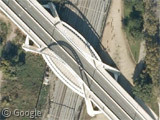
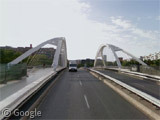
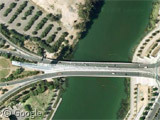
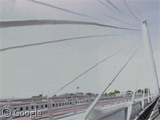
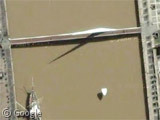
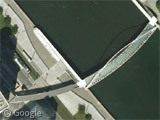
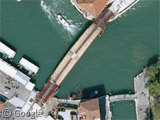
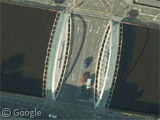
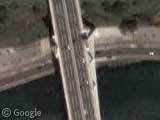


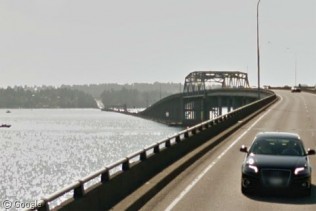
Here is a Calatrava bridge that links Manchester and Salford. Its very nice and all but its not his greatest work. I suspect he had little to do with it himself and probably just had it lying about in a drawer somewhere marked “castoffs”.
View Placemark
Its a pedestrian bridge so its a bit tricky to find in Street View but you can just see it in the distance
View Placemark,,0,3.66
Thanks cookie monster … I actually had that bridge (and that exact same street view) in an early draft of the post, but took it out when I discovered that the Barcelona bridge was built earlier. Not sure it was a ‘castoff’ – it may have been his first bridge featuring a mast supporting the cables!
Sadly google maps still doesn’t have the 3 Calatrva Bridges on the A1 highway near Reggio Emilia, Italy
View Placemark
And on another note: Calatrava bridge in Venice is beautiful, but when you walk on it, you understand: no place for wheels (being them for disabled peoples or for trolleys)